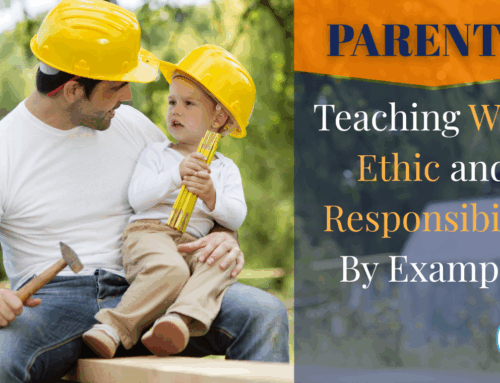
As a child, learning to read was an ordeal of very mixed emotions.
Some days, I couldn’t wait for my homeschool reading lesson. I would stand beside my mother and excitedly sound out the words on the page. I’d watch the timer furtively, hoping to read the required number of words in a minute so I could get my reward and move to the next page!
As the timer ticked down its final few seconds, I would begin to dance wildly in anticipation, my voice becoming shrill with desperation and excitement.
Other days, my brain would refuse to recognize the letters and their sounds. My tongue stumbled over letter combinations. My finger would nearly rub a hole in the page as I traced each letter and worked to say it.
I tried not to glance at the timer in despair, knowing that I would never make the required number of words. And as the timer announced that my minute was over, my shoulders would slump in frustration as I fought back tears.
Learning to read is a basic educational milestone for all children, but it’s not always an easy path. Adults have debated the best way to teach reading for years…and the controversy is not likely to end soon!
While there are many popular ways to teach reading, today we’ll talk about the connection between how children learn to read and their knowledge base.
Good reading is more than just recognizing letters and letter groups, or the sounds they make to form words. Reading comprehension is also a core aspect of good reading, allowing the child to understand the idea or concept that the words are trying to convey.
It’s common to teach children reading first when they are young. Just reading—matching letters to sounds, simple stories, random words in a column, and so on. Reading comprehension isn’t really considered to be a big deal yet. Content isn’t a focus.
But, what if this approach is short-sighted?
Research suggests that content and knowledge are as important as the exercise of reading itself.
The Problem
Reading comprehension is a huge factor in learning. The ability to effectively comprehend what they are reading allows the child to connect thoughts, ideas, concepts, and interests in their mind in connection with words and phrases. Reading comprehension isn’t currently considered a building block for reading in most teaching programs.
“American elementary education has been shaped by a theory that goes like this: Reading…can be taught in a manner completely disconnected from content….what children are reading doesn’t really matter—it’s better for them to acquire skills that will enable them to discover knowledge for themselves later on than for them to be given information directly, or so the thinking goes,” explains The Atlantic. “That is, they need to spend their time “learning to read” before “reading to learn.” Science can wait; history…must wait. Reading time is filled, instead, with a variety of short books and passages unconnected to one another except by the ‘comprehension skills,’ they’re meant to teach.”
A Prime Example
I remember a boy that I grew up with named Eddie. When it came to reading, he was just not interested.
Nothing made it better. His mother (who was also his teacher) tried everything that she knew. At 7 or 8, Eddie was still unable to read proficiently and had little interest in learning how to read any better. He could barely scrape by with his schoolwork, using pictures and context to help him guess what he was supposed to be reading to complete his studies.
One day, Eddie received a book on the Battle of Iwo Jima. It was a relatively thick book with plenty of large, complex words in it. To everyone’s surprise, he immediately began to read the book and refused to put it down. He devoured that book in a matter of a few days and then started it over again. Because his great-grandfather had been wounded on Iwo Jima, Eddie had a keen interest in WWII.
After that experience, Eddie was a much better reader. He showed more interest in reading, and his mother began to offer him more knowledge-based reading exercises to practice his reading skills.
Eddie excelled at reading that book because he could build on the knowledge that he already had.
The Importance of Knowledge
Knowledge-based reading is a concept that appears to be slowly gaining traction. The idea is that children find it easier to learn to read when they have more knowledge. Instead of teaching children to read with random words and simple fiction, we should teach them to read through reading exercises based on real-world information.
“Teaching knowledge is teaching reading—and reading will never be mastered beyond the ‘decoding’ stage without a solid foundation of knowledge,” The Thomas B. Fordham Institute explains. “Children cannot be truly literate without knowing about the world—about history, science, art, music, literature, civics, geography, and more…Reading comprehension, and thus learning by reading, depends on knowing something about the content of the passage at hand…The only way to help children become strong readers, regardless of topic, is to equip them with a large store of general knowledge—to help them learn something about everything. And that means implementing a well-designed, sequential, content-rich curriculum, especially in the early grades.”
A writer doesn’t include everything there is to know on their topic in every article or book they write. That would be impractical at best and most likely impossible. Instead, the writer assumes that the reader has at least a basic understanding of the topic. I’m writing this article with the assumption that you, the reader, understand a few basic facts. For instance, you probably know that reading is a taught skill. That’s a fundamental piece of knowledge that allows you to comprehend the topic. This would be a complicated and tedious article for you to struggle through without that basic understanding.
Imagine that I pick up a complex medical report. In that case, I might be able to read at a basic level—I could make out the word “liver” and maybe even something as unfamiliar to me as “cirrhosis.” Still, it’s very unlikely that I would fully comprehend the information that the report was giving me. Why? Because I have very little knowledge in that area. However, I certainly have an advantage over a young student learning to read because I already know how to read on a basic level and I have a broader base of conversational experience.
“Background knowledge acts as scaffolding, so when a student builds on existing information they already know, they’re better able to understand and remember the material…” Study International tells us. “Background knowledge also helps students draw inferences, which develops critical thinking skills and makes reading more enjoyable. When they can grasp the material and link it back to their own experiences or existing knowledge, they’re more likely to build a lifelong reading habit.”
Children are clean slates. Their knowledge is minimal, including their ability to read. General knowledge helps them make connections and comprehend what they are reading in a new and beneficial way.
The Solution
So, how can we help kids learn to read—and specifically, beef up their reading comprehension— more effectively?
Phonics
Scholastic suggests that one way to enhance reading comprehension is through phonics. “…Phonics instruction plays a key role in helping students comprehend text. It helps the student map sounds onto spellings, thus enabling them to decode words. Decoding words aids in the development of word recognition, which in turn increases reading fluency. Reading fluency improves reading comprehension because as students are no longer struggling with decoding words, they can concentrate on making meaning from the text.”
Phonics gives students the building blocks necessary to sound out the words properly, focusing on the meaning of the words instead of the words themselves. Phonics-based reading strategies offer students a solid foundation for their reading career.
Knowledge-Building
Another way to boost reading ability is by building general knowledge. Case studies have demonstrated that students with threshold knowledge read and learn better than their counterparts who lack that knowledge.
The Association for Physiological Science agrees. “Previous research has shown that students who lack sufficient reading skills, including decoding and vocabulary, fare poorly relative to their peers.…But the research of O’Reilly and ETS colleagues Zuowei Wang and John Sabatini suggest that a knowledge threshold may also be an essential component of reading comprehension.”
When children learn to read through real-world topics, it engages their minds and broadens their experience. What they read attaches to their previous knowledge like velcro, expanding their knowledge to new heights and enhancing their reading comprehension.
A few schools in America have begun to use this strategy in their curriculum. The overall data shows student improvement. As The Atlantic points out, “Teachers tend to be amazed at how quickly children absorb sophisticated vocabulary (like fertile and opponent) and learn to make connections between different topics”
Often, skill is prioritized over content when it comes to teaching reading. This can actually restrict students’ abilities to learn to read and reduce their reading comprehension. The fact of the matter is that these approaches don’t need to be mutually exclusive. There is a balance that we can reach.
“The lifelong love of reading and ‘authentic’ writing so prized by whole-language enthusiasts surely is not damaged by instruction in grammar or phonics; we needn’t choose one or the other,” explains the Thomas B. Fordham Institute. “Not only are there no legitimate grounds for presenting knowledge and skills as opposing ideals; cognitive science makes it abundantly clear that even conceiving of content knowledge and deeper learning as in any way separate and distinct invites fundamental misconceptions that can only affect teaching and learning adversely.”
The Takeaway
Children learn to read—and learn it more effectively—when they have knowledge. While the skills themselves are important, kids can sharpen their reading skills while broadening their knowledge. A solid understanding of phonics helps the student to focus on content, and their threshold knowledge gives the content something to latch on to.
This never-ending cycle of reading and learning working together could revolutionize our schools. Why not set down the failing reliance on disjointed chapter books and abstract “reading skills” to give our kids the foundation they really need?





Thanks for sharing your thoughts on focal one. Regards https://menbehealth.wordpress.com/
I found your post both helpful and inspiring! I love how it highlights that teaching children to read “the right way” involves guiding them beyond guessing to building solid decoding skills—like sounding out words rather than relying on pictures or context. This focus on phonics and phonemic awareness feels truly foundational for reading success, giving kids a clear, empowering path forward. A practical reminder that reading confidence starts with structure and support.
[…] debate over how to teach kids to read isn’t new, but the urgency has never been […]